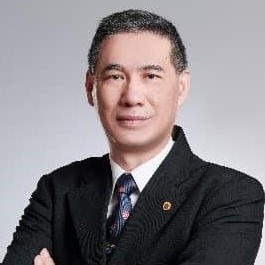Application of the Biocomposite Materials on Bone Reconstruction
A special issue of Applied Sciences (ISSN 2076-3417). This special issue belongs to the section "Materials Science and Engineering".
Deadline for manuscript submissions: closed (31 October 2020) | Viewed by 38504
Special Issue Editor
Interests: 3D scaffold; biomaterials micro/nano fabrication; 3D/4D printing & bioprinting
Special Issues, Collections and Topics in MDPI journals
Special Issue Information
Dear Colleagues,
Biomedical materials (also known as biomaterials) are new high-tech materials used to diagnose, treat, repair or replace human tissues, organs or enhance their functions. They involve the health of hundreds of millions of people and are essential for human health. Their application not only saves the lives of tens of millions of critically ill patients but also significantly reduces the mortality of major diseases such as cardiovascular disease, cancer, and trauma and plays an important role in improving the quality of life and health of patients and reducing medical costs. The development of biomedical materials also guides the innovation of contemporary medical technology and the development of medical and health services. For example, research and development of vascular stents, interventional catheters, and instruments have promoted the formation and development of minimally invasive and interventional treatment technologies. The development of carrier materials for targeted/smart controlled release systems of active substances (such as drugs, proteins, genes, etc.) will not only lead to revolutionary changes in traditional modes of administration, but also congenital genetic defects, geriatric diseases, and tumors, and refractory treatment will open up new avenues.
Reconstruction or repair of bone function using tissue engineering techniques often requires a biomaterial. Traditionally, the materials use metals, ceramics, and polymers, but the bone itself is a composite material. Therefore, knowing how to use the correct biomedical composite material is important. The different types of materials and their percentage composition in biocomposite materials are the first level, and then the characteristics of biocomposite materials (such as surface properties, strength, hardness, surface roughness, pH value, degradation performance) will affect their applications. The cell culture and animal experiments of biocomposite materials are used to determine the suitability of the future human body. The cell interactions with biocomposite materials are very important in cell culture. Microscale patterning of cells and their environment must be emphasized in cell culture. This Special Issue welcomes innovative research on application of biocomposite materials on bone reconstruction.
Prof. Dr. Yung-Kang Shen
Guest Editor
Manuscript Submission Information
Manuscripts should be submitted online at www.mdpi.com by registering and logging in to this website. Once you are registered, click here to go to the submission form. Manuscripts can be submitted until the deadline. All submissions that pass pre-check are peer-reviewed. Accepted papers will be published continuously in the journal (as soon as accepted) and will be listed together on the special issue website. Research articles, review articles as well as short communications are invited. For planned papers, a title and short abstract (about 100 words) can be sent to the Editorial Office for announcement on this website.
Submitted manuscripts should not have been published previously, nor be under consideration for publication elsewhere (except conference proceedings papers). All manuscripts are thoroughly refereed through a single-blind peer-review process. A guide for authors and other relevant information for submission of manuscripts is available on the Instructions for Authors page. Applied Sciences is an international peer-reviewed open access semimonthly journal published by MDPI.
Please visit the Instructions for Authors page before submitting a manuscript. The Article Processing Charge (APC) for publication in this open access journal is 2400 CHF (Swiss Francs). Submitted papers should be well formatted and use good English. Authors may use MDPI's English editing service prior to publication or during author revisions.
Keywords
- biocomposite materials
- material composition and percentage
- material characteristics
- cell patterning
- bone reconstruction





